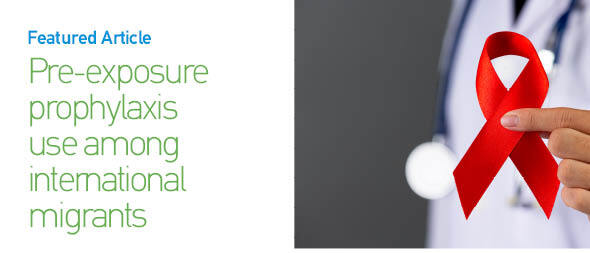Dear Editor,
Adherence to the antiretroviral therapy (ART) is crucial in improving the lives of people living with HIV (PLHIV). However, this is hampered by factors that include poor adherence behavior and adherence anxiety, emotional and physical challenges, conditions interfering with intake, confidentiality concerns, and stigma1. This hinders the suppression of HIV replication, thus increasing the transmission of the disease compounded by a lack of pre-exposure prophylaxis (PrEP) in particular communities such as international migrants. International migrants face challenges in obtaining PrEP for HIV prevention because of factors that include language barriers, low HIV risk perception, higher costs, provider’s discrimination, negative perceptions, illegal residence status, and a lack of resources2. These obstacles, along with concerns about legal standing and healthcare access, highlight the need for culturally competent treatments and fair regulations3. Navigating the HIV prophylaxis landscape is like exploring a maze because there are multiple obstacles.
Culturally appropriate strategies serve as beacons, illuminating the way forward. Strategies at the societal, service, and individual levels will be expedient to address the barriers to PrEP use among international migrants who might benefit from it the most in order to reduce health disparities3. The community should be empowered through targeted interventions as part of the measures to encourage PrEP use among international migrants. This includes educating the community about sexual health and assisting them in gaining access to fundamental needs and rights. Programs for collective empowerment that are funded by affiliated NGOs should confront racism and stigma. A thorough study integrating clinical, epidemiological, and social sciences with the goal of promoting PrEP use among international migrants while taking healthcare networks and staff into account is of utmost importance4. To ensure equitable access and integration with more comprehensive health services, it is important to encourage PrEP use among international migrants by addressing structural barriers, providing community-based alternatives, imparting accurate PrEP knowledge, promoting mental health, taking into account social group influences, and advocating for policy changes.
Tailoring PrEP programs to cater for the specific needs of international migrants, irrespective of residence status, should be ensured while allocating resources to support accessibility. Simplifying administrative procedures and decentralizing HIV and PrEP services can enhance accessibility and encourage long-term use. Telemedicine and digital health solutions, as well as flexible treatment regimens, can be implemented to minimize repeat clinic visits and reduce the stigma associated with taking PrEP5. Promoting PrEP Drug Assistance Programs (PrEP DAP) with seamless pathways to care and financial navigation support would play a significant role in encouraging PrEP compliance6. Improving HIV understanding, raising awareness, distributing PrEP knowledge through peers and healthcare professionals, and modifying PrEP delivery to lessen stigma are some of the tactics to encourage PrEP use among international migrants. It is essential to raise self-perceived HIV risk awareness, especially among younger migrants. PrEP awareness should explore peer communication and community outreach5. Eliminating stigma is essential in order to normalize PrEP’s preventive effects and strengthen long-lasting preventative measures. Policies should support organizations working with immigrants. By implementing these strategies, the long-term use of PrEP can be encouraged among international migrants, reducing HIV transmission and improving overall public health outcomes.


